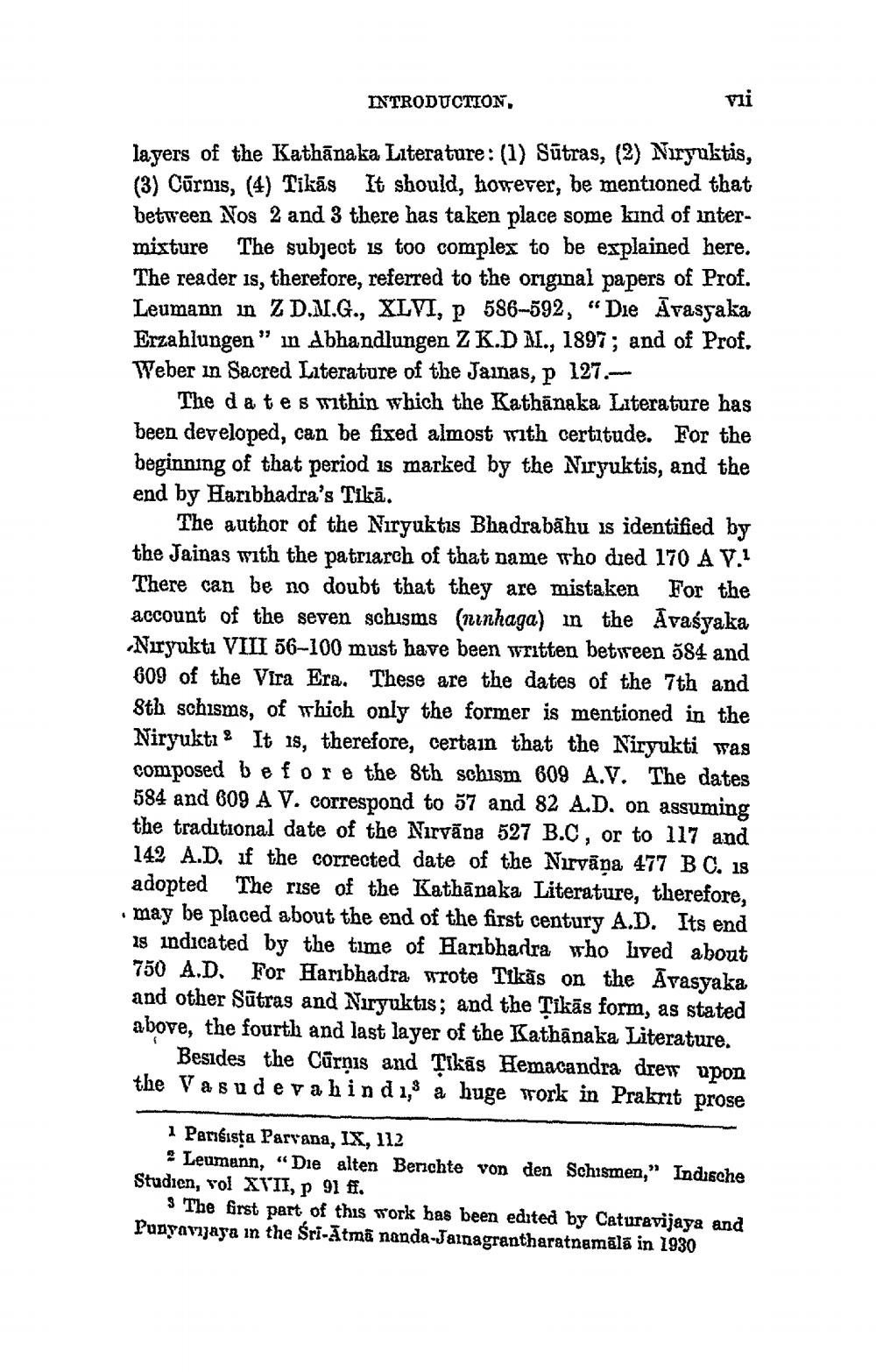________________
INTRODUCTION,
vii
layers of the Kathānaka Literature: (1) Sūtras, (2) Niryuktis, (3) Cūrnis, (4) Tikās It should, however, be mentioned that between Nos 2 and 3 there has taken place some kind of intermixture The subject is too complex to be explained here. The reader is, therefore, referred to the original papers of Prof. Leumann in Z D.M.G., XLVI, P 586-592, “Die Āvassaka Erzahlungen" in Abhandlungen Z K.D M., 1897; and of Prof. Weber in Sacred Literature of the Jainas, p 127.
The dates within which the Kathānaka Literature has been developed, can be fixed almost with certitude. For the beginning of that period is marked by the Niryuktis, and the end by Haribhadra's Tikā.
The author of the Niryuktis Bhadrabāhu is identified by the Jainas with the patriarch of that name who died 170 A V.! There can be no doubt that they are mistaken for the account of the seven schisms (zinhaga) in the Avaśyaka Niryukta VIII 56-100 must have been written between 584 and 609 of the Vira Era. These are the dates of the 7th and 8th schisms, of which only the former is mentioned in the Niryuktı? It is, therefore, certain that the Niryukti was composed before the 8th schism 609 A.V. The dates 584 and 609 A V. correspond to 57 and 82 A.D. on assuming the traditional date of the Nirgāna 527 B.C, or to 117 and 142 A.D. if the corrected date of the Nirvana 477 B C. is adopted The rise of the Kathānaka Literature, therefore, . may be placed about the end of the first century A.D. Its end
is indicated by the time of Harbhadra who lived about 750 A.D. For Haribhadra wrote Tikās on the ĀTasyaka and other Sūtras and Niryuktis; and the Tikās form, as stated above, the fourth and last layer of the Kathanaka Literature.
Besides the Cūrnis and Fikās Hemacandra dress upon the Vasudevahind 1, a huge Fork in Prakrit prose
i Parifista Parvana, IX, 112
? Leumann, “Die alten Berichte von den Schismen," Indische Studien, vol XVII, p 91 ff.
The first part of this work has been edited by Caturavijaya and Punyavijaya in the Sri-Ātma nanda-Jainagrantharatnamālá in 1930




